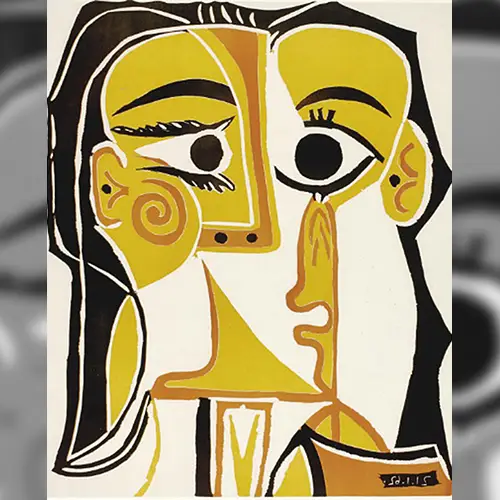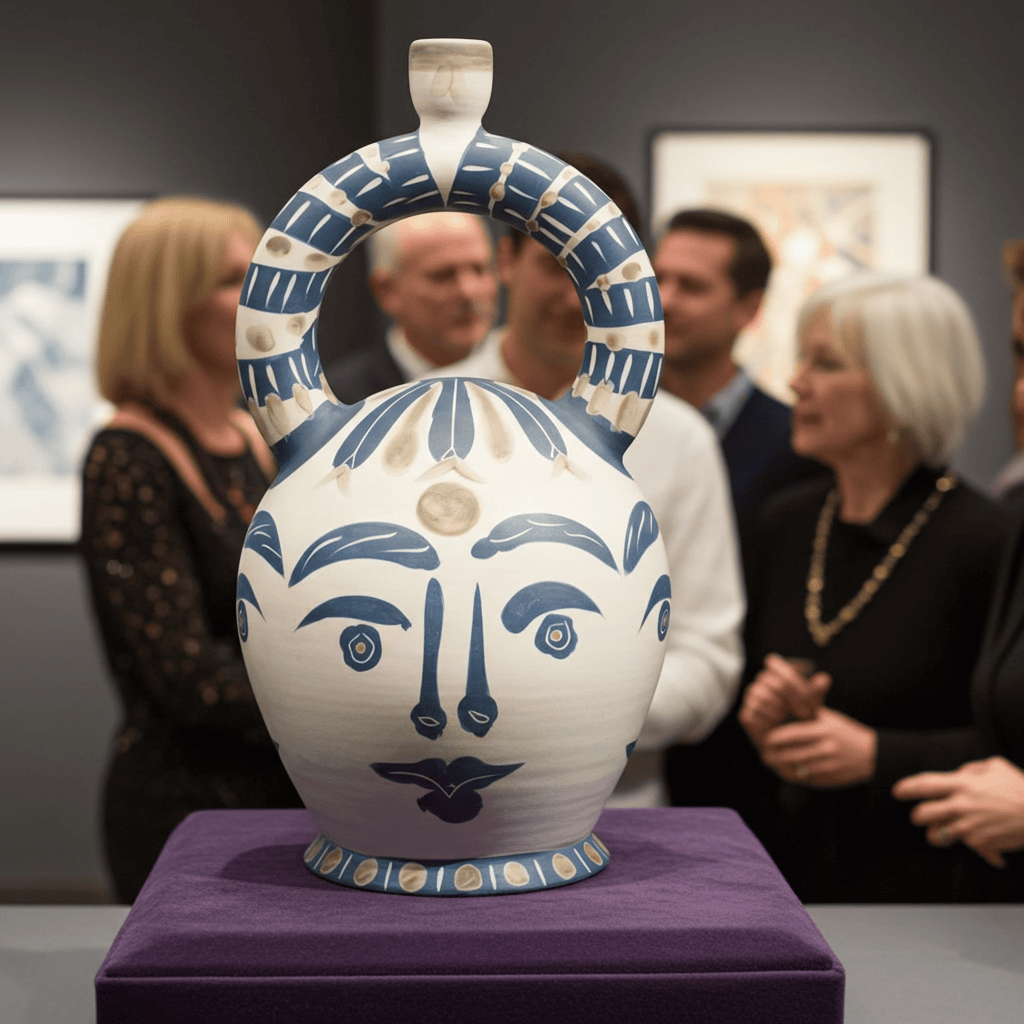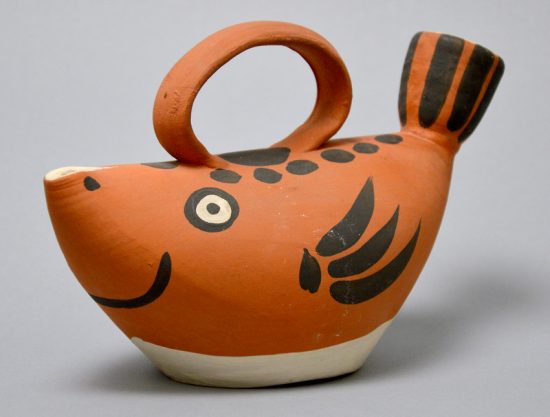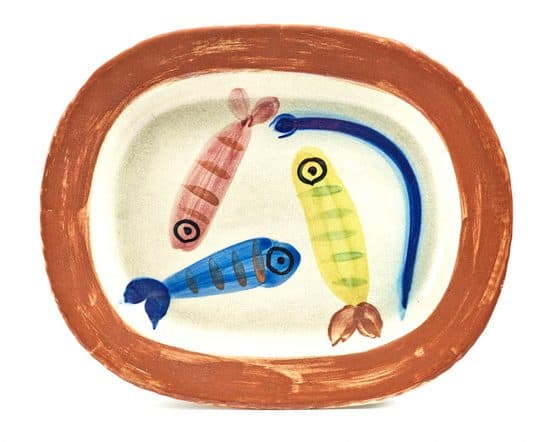Picasso Fish Subjects reveal the artist’s enduring fascination with aquatic life, transforming simple forms into vibrant symbols of movement, color, and emotion.
Pablo Picasso’s Fish Subjects art is celebrated for its boundless creativity, and among his many recurring themes, the subject of fish holds a fascinating place within his oeuvre. While not as immediately iconic as his bulls, doves, or portraits of women, Picasso’s exploration of fish reveals much about his artistic curiosity, his Mediterranean lifestyle, and his ability to transform ordinary creatures into enduring symbols of vitality and form. His fish subjects appear across a variety of mediums—paintings, drawings, prints, and especially ceramics—demonstrating his joy in experimentation and his unique eye for turning the natural world into art.
Picasso’s connection to the sea was both personal and artistic. Having lived much of his life in coastal towns such as Barcelona, Antibes, and Vallauris, he was constantly surrounded by fishermen, markets, and the ever-changing waters of the Mediterranean. Fish, as subjects, became natural extensions of his environment, often depicted with bold lines, stylized simplicity, or playful exaggeration. In his ceramics produced at the Madoura studio in Vallauris, fish designs are especially prominent—incised, painted, or glazed into plates, pitchers, and bowls—celebrated for their lively energy and whimsical charm. These works embody not just Picasso’s vision of marine life but also his joy in merging art with the everyday act of dining and gathering.
Beyond their decorative appeal, Picasso’s fish subjects carry deeper symbolic weight. In Mediterranean cultures, fish are often associated with fertility, abundance, and renewal—motifs that aligned well with Picasso’s constant reinvention of his artistic style. Some works even display fish alongside other mythological or allegorical elements, blending the ordinary with the timeless. For collectors, these pieces are not just rare glimpses into Picasso’s more playful side but also tangible connections to the artist’s life by the sea.
Today, Picasso’s fish artworks—whether on canvas or in ceramic—are highly sought after by museums and private collectors alike. They are admired for their freshness, their intimate scale, and their ability to capture both the simplicity of a seaside subject and the genius of Picasso’s hand. Within his vast body of work, fish subjects may seem like small notes in a larger symphony, yet they exemplify the artist’s unmatched ability to transform the most familiar of themes into something vibrant, timeless, and unforgettable.
Most Famous Picasso Fish Artworks
Pablo Picasso’s fish motifs, though subtle compared to his iconic bulls or portraits, reveal his inventive spirit across ceramics, drawings, and print media. Here are some of his standout fish works:
1. Picasso “Fish” Service Plate Q (1947)
This brightly colored dinnerware piece features a stylized fish crafted with vivid yellow bodies, blue stripes, and red fins set against a cream background, accented with a yellow-rimmed border
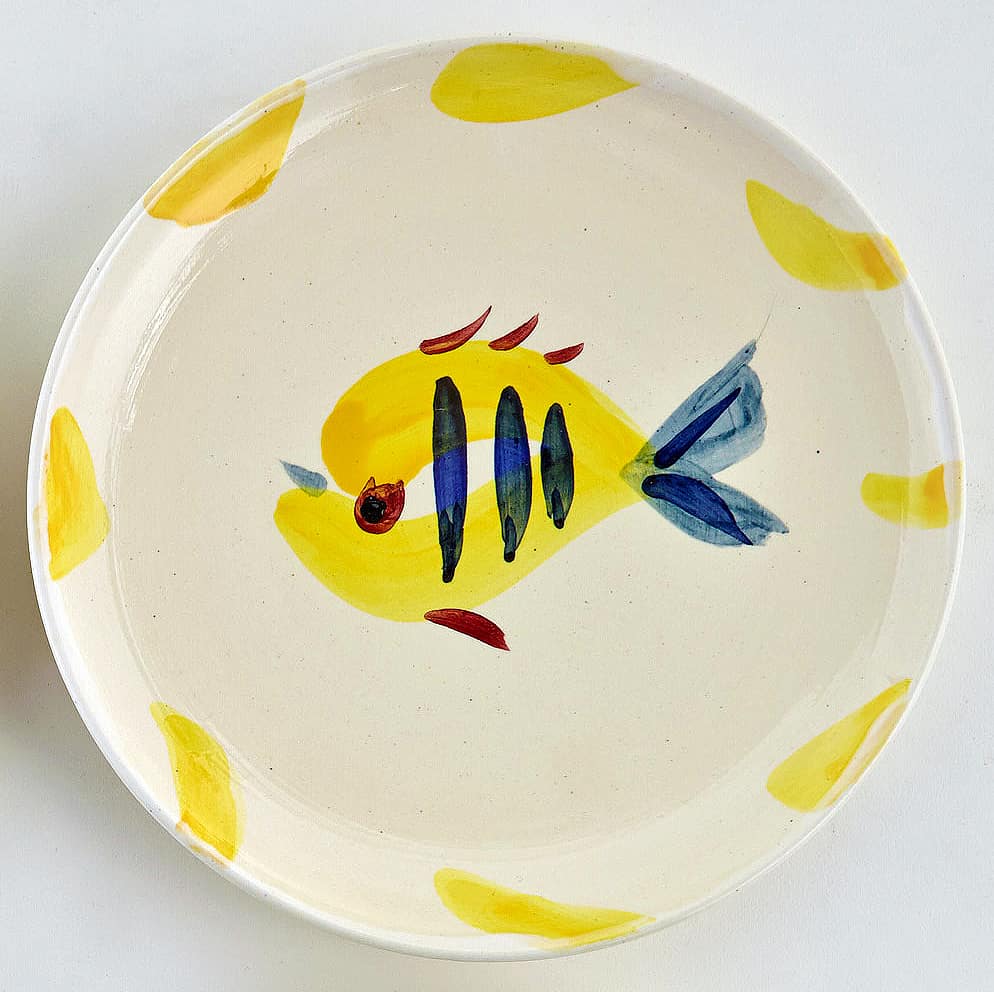
Produced at the Madoura studio during his ceramic period in Vallauris, this decorative yet functional design captures Picasso’s playful charm
2. Picasso Fish Subject Pitcher (1952–1954)
In this sculptural ceramic, Picasso shapes the vessel itself into the form of a fish—complete with a dorsal fin-shaped handle and a tail-spout—bringing whimsical animation to an everyday object
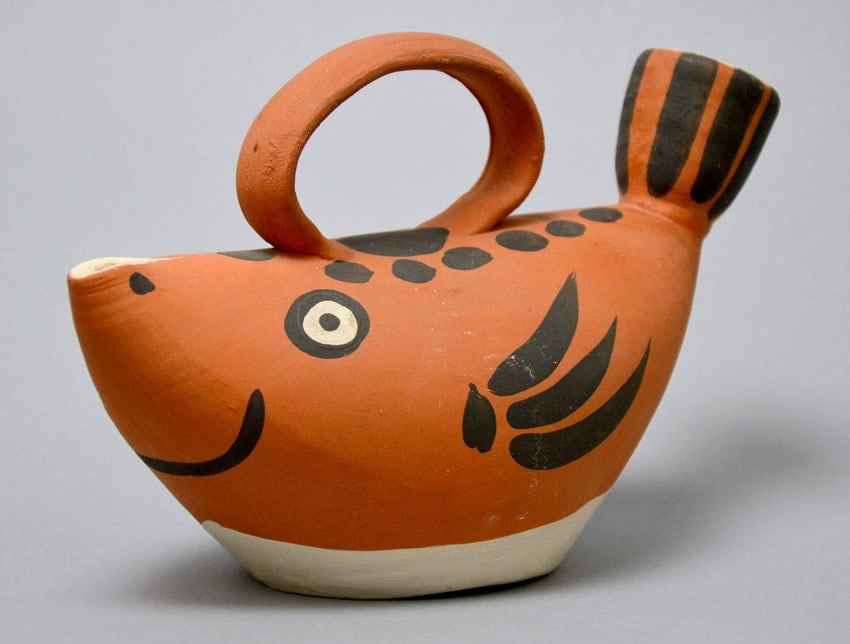
3. Picasso Fish in Profile (1955)
This modest bowl features an incised fish profile with spiky fins and patterned skin reminiscent of prehistoric creatures. Created at Madoura, it was released in a limited edition of 100 and carries the characteristic stamps of 'Madoura Plein Feu' and 'Empreinte Originale de Picasso'
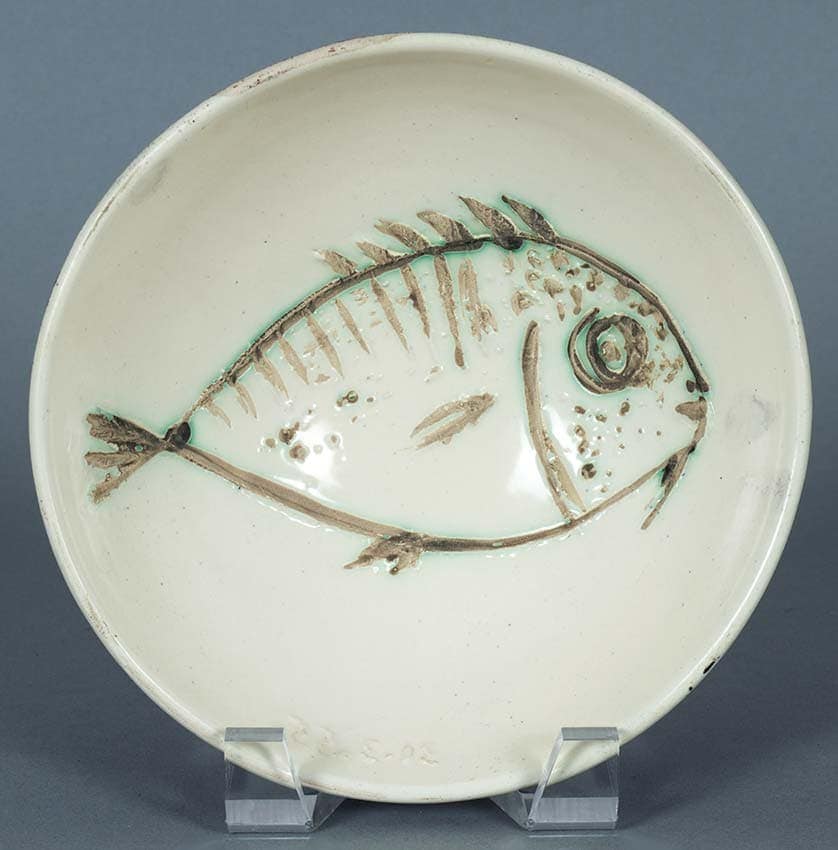
4. Picasso Trois poissons (Three Fish) Plate (1957)
In this unique glazed ceramic, Picasso plays with illusion by incising three fish whose forms interact—they appear to float or protrude—as he counters the shape of the plate’s surface. Inspired by Greek fish plate tradition yet distinctly his own, it showcases his playful manipulation of form and depth
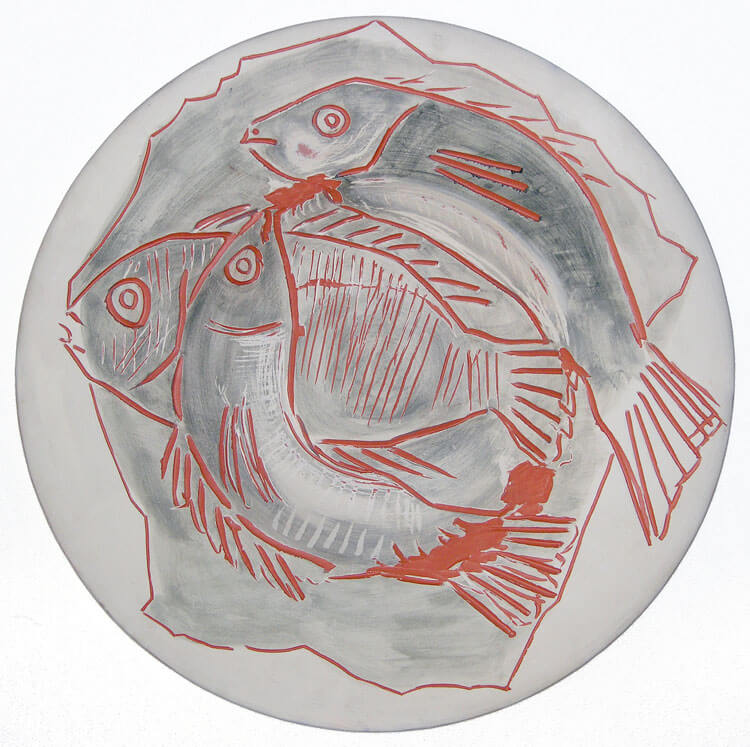
5. Picasso Blue Fish (1953)
This elegantly rendered plate showcases a fish drawn in engobes against a white earthenware background. One edition reached auction, reflecting its appeal to collectors.
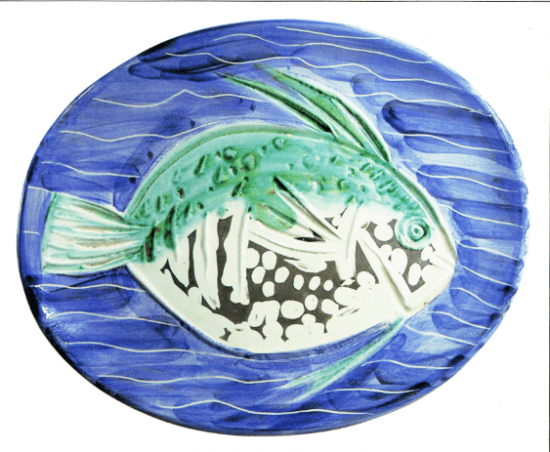
Why Picasso’s Fish Artworks Stand Out
- Mediterranean Influence: Picasso’s surroundings in Vallauris and his connection to coastal life inspired these aquatic forms, representing both local culture and personal fascination.
- Bold Creativity Across Mediums: Whether shaped into pitchers, etched onto cups, or painted on plates, Picasso infused playful elegance and formal innovation into even the most humble subject.
- Artful and Accessible: Designed both for daily use and for aesthetic delight, these fish works exhibit Picasso’s mission to bring art into everyday life.
- Collectibility: Rarity, charm, and expert craftsmanship make these ceramic fish pieces highly desirable among collectors and institutions alike.
- · Madoura Ceramics Collection, Vallauris
- · Cooper Hewitt, Smithsonian Design Museum, New York
- · Musée Picasso, Paris
Most Famous Picasso Fish Painting
The most significant fish-themed painting by Pablo Picasso is Night Fishing at Antibes (1939), an oil on canvas measuring 205.7 × 345.4 cm. This masterpiece is housed at The Museum of Modern Art (MoMA) in New York City.
Created during the summer of 1939 in Antibes on the French Riviera, Picasso was inspired by the local fishermen's nocturnal practices. The painting depicts two fishermen in a boat, illuminated by gas lamps, spearing fish in the dark waters . The scene is set against a backdrop of the moonlit Mediterranean, with figures on the breakwater and the old town of Antibes visible in the distance .
Night Fishing at Antibes is notable for its vibrant color palette, including deep blues, greens, and yellows, which create a dreamlike atmosphere. The composition blends elements of Surrealism and Cubism, showcasing Picasso's mastery in merging abstraction with figurative elements .
This painting is considered one of Picasso's most important works, reflecting his innovative approach to art and his ability to capture the essence of his surroundings. It stands as a testament to his enduring legacy in the art world.
Renowned Artists and the Art of Fish: From Picasso to Contemporary Vision
Matisse frequently depicted fish in his vibrant Fauvist paintings and decorative prints. Works like Goldfish (1912) use bold, simplified shapes and bright colors to transform a common aquarium fish into a study of color, space, and tranquility.
2. Paul Klee (1879–1940)
Klee’s playful and abstract approach often incorporated aquatic themes. In works like Fish Magic (1925), he merges surrealism and symbolism, combining fish, boats, and cosmic imagery to explore imagination and the subconscious.
Chagall used fish in dreamlike compositions, sometimes as symbolic motifs in his floating, fantastical worlds. Works such as The Birthday (1915) and The Fish (1952) showcase his lyrical, poetic use of color and form.
Alongside his Cubist experiments, Braque occasionally depicted fish and fishing still lifes, emphasizing geometric fragmentation and the interplay of shapes in compositions like Fishing Boats at L’Estaque (1906).
Miró’s abstract, biomorphic forms often included stylized fish, representing both fertility and freedom. His playful ceramics and prints frequently depict fish in a whimsical, almost dreamlike manner.
6. Gustav Klimt (1862–1918)
While less frequent, Klimt painted fish in some allegorical and decorative works, often intertwined with water and aquatic vegetation, reflecting his ornamental and symbolic style.

